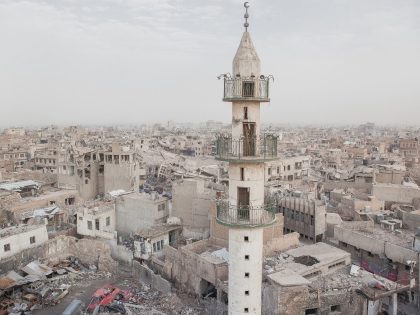The romanticism of history
The resistance legacy of Brazilian slaves suffers from both romanticism and a spotty historical record. But it also persists as a potent social and cultural symbol.

Monument of Zumbi dos Palmares
Brazil imported more African slaves than any other country in the Western Hemisphere. With over four million enslaved brought to its shores, the former Portuguese colony accounts for over 40% of all slaves brought to the Americas. It was also the last country to abolish slavery when it finally did so in 1888. With a long coastline, undeveloped interior, and Portuguese tradition of clustering in small trading ports, Brazil also became prime territory for slaves to run away from captivity. Maroon communities established themselves throughout Brazil, just like in Colombia, the Guyanas, and the Caribbean. Brazilian quilombos (from the Kimbundo kilombo), as maroon communities were called, represent a complex heritage. On the one hand they were undeniably places of resistance to slavery. On the other hand, historical documentation confirms that some quilombos – like Jamaican maroons – had closed their ranks to newcomers and would return runaways to plantations, or even kept slaves themselves, as part of an uneasy peace with European colonists.
Ultimately, the quilombo legacy suffers from both romanticism and a spotty historical record but has persisted to the present as a potent social and cultural symbol, especially the Quilombo dos Palmares. Palmares, the longest lasting quilombo, was established in Pernambuco around 1600. Estimates of its peak population vary between 11,000 and 20,000, with estimates of its land area suggesting it encompassed a territory as large as Portugal.
Repeated Portuguese military expeditions failed to conquer the increasingly organized parallel state under its final leader, Zumbi. Finally, in 1694, the capital of Palmares fell and Zumbi fled. He was captured and beheaded on November 20, 1695.
If Palmares the place became the symbol of African resistance to Portuguese rule, then Zumbi the person became its hero. The growing movimento negro (black movement) began commemorating his assassination in the 1960s. By the 2000s, they had successfully petitioned for states, municipalities, and the national government to adopt November 20 as the Day of Zumbi and Black Consciousness. Nowadays, the whole month of November is treated similarly to February’s Black History Month in the US.
Meanwhile, remnants of quilombo communities persisted into the contemporary era as Afro-Brazilians continue to live on their ancestral lands in both the countryside and dense urban areas. In some places, like Rio de Janeiro’s Floresta da Tijuca, the mountainous rainforest region in the center of the city, yesterday’s quilombos gave way to today’s favelas.
The situation changed dramatically in 1988, when Brazil’s current constitution was adopted. It explicitly recognized the rights of quilombo communities and their descendents, leading to the modern quilombo movement. Today, almost 2,000 such communities are officially recognized by the state. 1988 also saw the establishment of the publicly run Fundação Cultural Palmares, a branch of the federal Ministry of Culture that promotes Afro-Brazilian history and identity.
If this seems like a happy ending of historical justice, the reality is more complicated. On the eve of Black Consciousness Day in 2013, the Institute of Applied Economic Research published an empirical study that concluded black Brazilians are twice as likely to be homicide victims as non-black Brazilians. While certainly intended as a sobering clarion call, it read like a perverse celebration of the holiday, which after all commemorates the homicide of a black Brazilian. Alagoas, the present home state of the Palmares historical monument, was singled out as one of the worst states in the country, with 17.4 blacks killed for every one non-black.
And yet, the quilombo idea of freedom and an alternative to oppression persists in Brazilian myth-making. A leftist NGO in Porto Alegre, Guayí, that promotes “democracy, participation, and solidarity” won a Ministry of Culture grant and established a physical space for workshops and performances on Afro-Brazilian culture in Brazil’s least African-influenced region that they call the Quilombo do Sopapo.
For DJ/producer Maga Bo, it was an inspiration for his 2012 album drawing on Afro-Brazilian rhythms, Quilombo do Futuro, whose title gestures not only to the quilombo’s cultural symbolism but also to notions of Afro-futurism – a philosophy with far fewer artistic adherents in Brazil than in the Anglophone world.
Maga Bo’s production style incorporates the deep, voluminous bass and sonically suggestive techniques of loops and samples that digital technology provides without overwhelming the richness of acoustic instrumentation and talented vocalists. With an omnivorous approach to his adopted country’s music, Maga Bo crisscrosses the musical geography of Brazil, but as the title of the album suggests, he draws on many of the same styles that contemporary quilombos embrace. In his artistic conception, the quilombo is both a wellspring of acoustic historical memory and a launch pad for a bass-heavy digital music future.
The quilombo’s cultural symbolism and challenging socio-political reality will serve as the fodder for a two-part discussion at Columbia University’s Center for Brazilian Studies and NYU’s Center for Latin American and Caribbean Studies this week. On Wednesday, April 29, Columbia hosts José Maurício Arruti of the Universidade Estadual de Campinas to talk about political and territorial issues affecting quilombos. On Thursday, April 30, NYU hosts Maga Bo, vocalist BNegão, and visiting scholar Mariléa de Almeida to talk about social and cultural resonances of quilombos. Later that night, Maga Bo and BNegão – who will perform live at NYU – take their Afro-Brazilian collaboration to Nublu in the East Village for the Quilombo do Futuro afterparty.



















